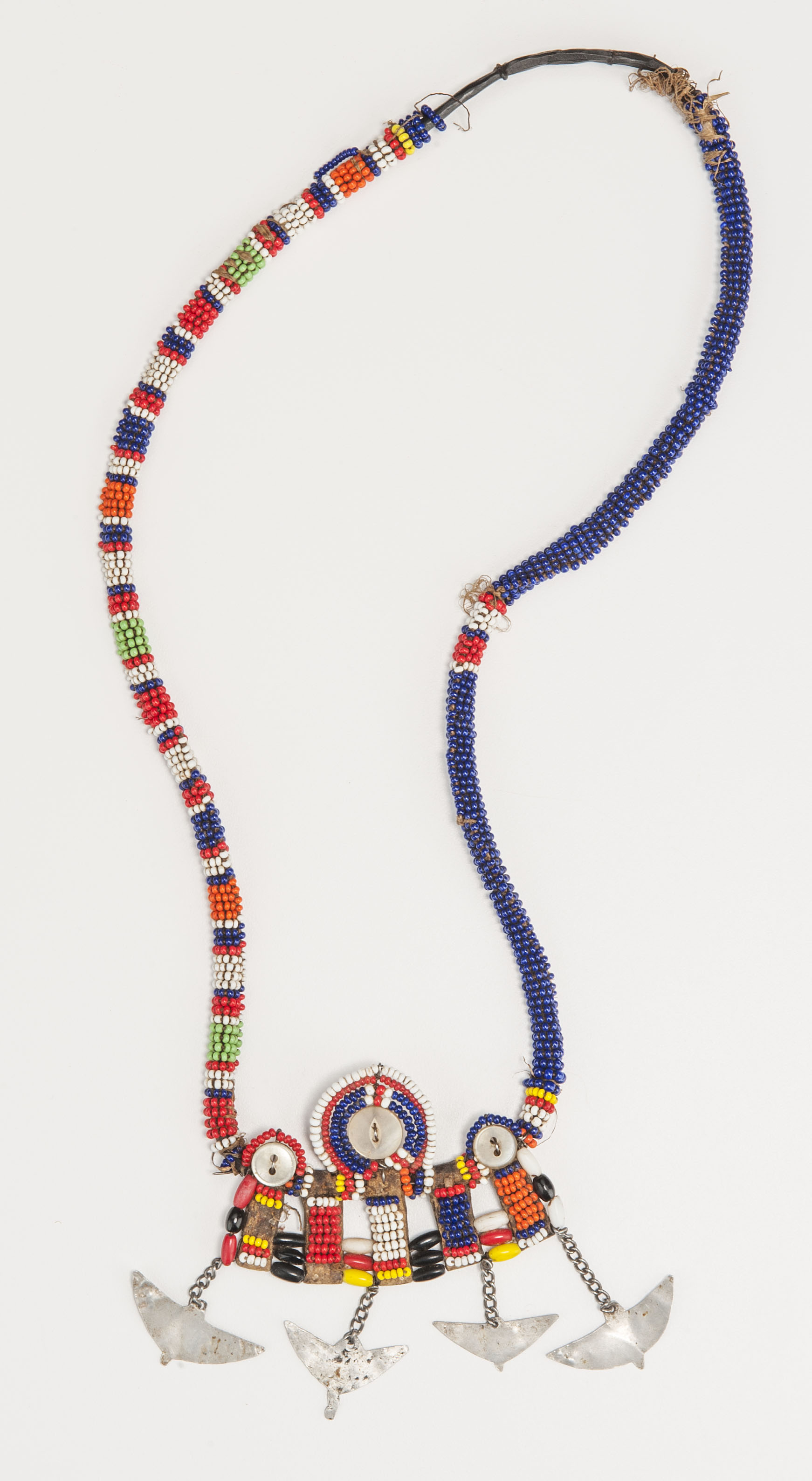On February 26th Indiana University Art Museum will be opening a special exhibition on a large collection of traditional artwork from Kenya that the museum purchased last year. This collection positions IU the premier art museum in the United States for research in traditional Kenyan visual arts. We are excited to present four pieces from this collection in DailyArt and show them every Sunday until February 28th. Enjoy :) And Happy Valentines Day!
Like many pastoral groups in Kenya, Samburu people traditionally wear jewelry not only to enhance their appearance but also to communicate to others their age, sex, and social status. This colorful bead necklace would have been worn by a young unmarried man who was a member of the warrior age grade. Living in north-central Kenya, south and southeast of Lake Turkana, the Samburu traditionally move around this area to find pasture and water for their cattle, camels, sheep, and goats. Like their better-known neighbors, the Maasai, with whom they share many cultural traits and practices, Samburu males are divided into three age grades: boys, warriors, and elders. Warriors are traditionally charged with protecting the herds and flocks. It would be hard to overstate the traditional importance of this livestock to the Samburu people: the animals not only represent wealth but also furnish milk, the dietary staple. Though meant for a man to wear, the necklace was designed and made by a woman. Among the Samburu, as well as the Maasai and other East African pastoral peoples, beadworking is a female-performed art, and young women are responsible for ensuring that their boyfriends and relatives who have reached warrior status have many beautiful ornaments with which to adorn themselves. The buttons, aluminum, and even the beads themselves are all imported. Beadwork color combinations and patterns and the incorporation of other materials reflect changing styles and fashions as well as group aesthetic preferences. As both the color selection on the pendant and band of this necklace indicate, Samburu beadworkers, like the Maasai, do not value the symmetry and regularity that characterizes much American and European jewelry.




Man’s Necklace
glass beads, aluminum, rubber, buttons, wire, hide, fiber • 36.8 x 13.7 cm
 Unknown Artist
Unknown Artist